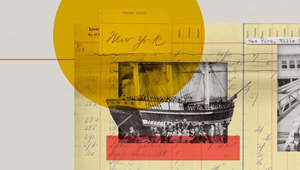
Vice’s Return Points to a Craving for More Curated Content

Early 2000’s Indie Sleazers rejoice - the Vice printed edition is back!
The recent news that the print magazine is coming back as a quarterly might have come as a surprise to some, at a time when most publishers are retreating from print altogether. London’s Evening Standard is the most recent casualty, axing its daily print edition in favour of a weekly publication, while countless other once-beloved magazines have left the world of print entirely and opted for a digital only model.
Vice, in some ways, is an even more unlikely candidate as it was an early, disruptive cheerleader for digital media. However, the strategy failed and the company filed for bankruptcy in 2023, its twilight years featuring a site riddled with clickbait and a business having never reached sustained profitability. Its decision to return to a print title (on hiatus since 2019) is part of a wider brand relaunch under new ownership after rights to all Vice’s digital properties were acquired by Savage Ventures. However, this time there is an important difference: rather than the previous ad-driven model the Vice print edition will be a subscription only publication. Vice has said that according to its own research, fans of the brand see the return of a print mag as a compelling reason to subscribe.
Of course fashions always go in cycles, and there is very much a swing back towards the physical right now – as demonstrated by the revival of vinyl, and falls in sales of e-books in favour of the ink and paper versions. But I believe that this is about more than having something chunky and colourful to put on display on a shelf.
What consumers are craving is curated and considered content.
In the age of the algorithm, we’ve all become used to the content we consume being shaped for us on the feed. Our news, social feeds and even the music we listen to are shaped by data and decided by tech, rather than an editorial voice. Meanwhile, too many publishers lure us with clickbait rather than originality. They feed us what they think we want, rather than surprising us with something unexpected.
In contrast, in its hey-day Vice offered something far more considered - it was unexpected, showed niche figures and dealt with gritty subjects. Not only that but the publication was only available in record and vintage stores - you had to hunt it down. Readers felt a sense of pride, social clout in abundance.
Vice is looking to bring that back with the new mag - as it says, the print title will be “full of pictures that you will want to show your friends, stories you will steal and present to your friends as your own, and acidic social commentary, written by a gang of charlatans, losers, and freaks redeemed only by the occasional burst of clarity.”
In other words, it has a point of view – in contrast, arguably, to the Standard, which was once a distinctive voice for London but in recent years has tended towards consolidating content available elsewhere.
Of course, Vice is not the only editorial publication to claim that it will offer something more than homogenised clickbait: the likes of New York Times and the Guardian have proudly marketed themselves on that very premise for the past few years, stressing the importance of trusted voices, great writers and long-form investigative journalism.
But the Vice relaunch points to a renewed appetite for content about popular culture, either print or digital, that takes a deeper dive into stories. Although social platforms push us towards the short form, that’s not all we want. Another indicator of this is the appetite for podcasts: according to a recent study by Edison Research over two-thirds of the United Kingdom aged 18+ have listened to a podcast, and weekly UK podcast listeners aged 15+ spend an average of 5 hours and 27 minutes listening to podcasts in a typical week. The sheer volume of podcasts now means that there is potentially a topic for everyone, allowing listeners to personalise their content even more.
This trend isn’t just exciting for potential advertisers in Vice, it has implications for other brands too. As marketers look to build their own branded content, there’s a chance for them to benefit from this appetite for a deeper, more curated experience. It’s one heck of an exciting shift to see happening and I’m looking forward to seeing how it unfolds.















